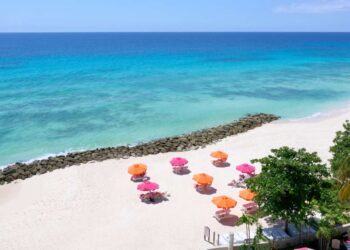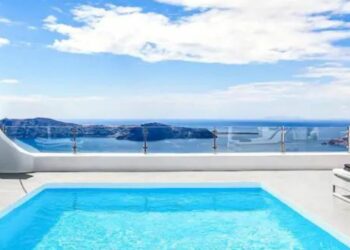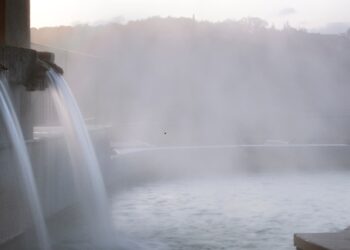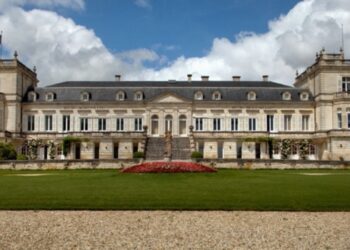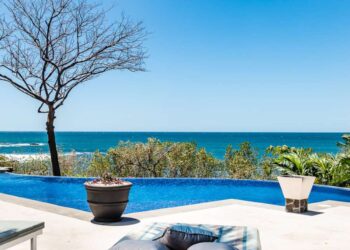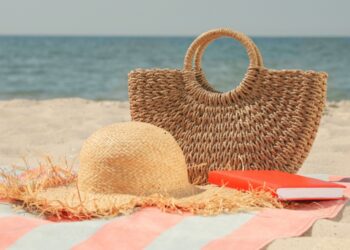European travel writer Iuliana Marchian, shares her experience discovering the magic of the Moroccan Desert and embarking on an adventurous, epic four-day camel ride experience through the Sahara.
The Magical Moroccan Desert
I am always looking to discover far-flung places, local traditions, and customs, untouched nature, and unique adventures, and reading about the Sahara Desert has always triggered my desire to explore it. Being from Romania, I’m drawn to warm countries, sandy dunes, and lush palm oases, so Morocco seemed the perfect place to satisfy my longing, especially in the middle of the European winter.
Spanning several countries in Africa, the western part of the Sahara starts in Southern Morocco, near the border to Algeria. One of the most remote parts of the Moroccan Desert, where you will find the largest, wildest, and the highest dunes in the country is Erg Chigaga. Located Between the towns of Zagora and M’Hammid Lghzlan, most of the region can only be reached by jeep, but its most pristine trails can be experienced by trekking or riding a camel. As camel caravans were the main means of transportation across the Sahara in the past, riding a camel is the best, most sustainable way to explore and live in the desert for a couple of days.
My Camel Ride in the Sahara

Camel trekking to the most remote part of the Moroccan Desert is without doubt one of the most authentic and challenging experiences when traveling to North Africa. Before starting my journey I contacted Mohammed, a local guide from Marrakesh who was recommended to me. I told him I wanted a multi-day camel trek in the Erg Chigaga region and he suggested several trails – easier short ones as well as longer, more demanding treks. I chose the longest and most challenging one, a four-day circuit that included a climb to the top of the highest dune in Morocco.
Day 1

On the first day of the trek, Mohamed picked up me and another traveler from Zagora around noon. A jeep took us from Zagora close to Foun Zguid, where our trail started. In the middle of nowhere, two camels and their caregiver – Lahssen, were patiently waiting for us in the shade of the only acacia tree. We had a quick lunch under the frail tree, then set off to cross the vast Faija Plateau to climb up in the Jbel Bani Mountains, part of the National Park d’Iriqui.
The Jbel Bani are small mountains with rocky terrain and the scenery is stunning arid reddish. A few random acacia trees and some bushes dotted the landscape. The footpath snaked between large, black boulders up to Oum Laachar Pass, from where we gently climbed down along a narrow, dry valley with a rocky riverbed, the Oued Lemhasser Valley. When we started the descent, the entire desert spanned in front of us – a stellar view of the expansive area we would trek for the following days. No settlements, no people. Just some nomad Berber camps and dunes. Infinite dunes.
Day 2

On the second day of the trek, we walked along the Ouad Mhasser Valley, a 12 miles long and sinuous valley bringing us close to the border with Algeria. An arid landscape, with red soil and isolated dry bushes surrounded us. The rare sight of an acacia tree loftily marked the horizon as a sign of life. Around noon, we reached Tighrghrin Oasis, a fairy-tale paradise with lush palm trees and a freshwater spring. We would have loved to stay longer in this desert garden but we still had a long way to go.
We continued along the dry Ouad Mhasser Valley, which had been without water after a long torrid summer. Lonely palm trees and bushes appeared here and there along the valley. The footpath followed the edge of the valley until we reached the camp of a nomad family near Afrokh Oasis.
A Berber woman and many children warmly greeted us in the camp. They served us Moroccan tea made on embers, ripe figs from the nearby oasis, fresh goat milk, and warm bread freshly baked in the earth oven. We sat down on a Berber rug under the shade of an acacia to enjoy our basic, but so delicious food.

Encountering nomads was the best way to learn about their lifestyle in the harshness of the desert. Nomads live in the high mountains during torrid summers and only come down to the desert areas in winter when temperatures drop. They set their temporary camp near an oasis with a permanent source of water so that their goats and camels have food. For primary food – like rice, couscous, flour, and spices, they go to the nearest settlement by camels or donkeys and stock up for a whole month.
Drinking tea made on embers was a unique experience but seeing how nomads bake their bread was even more exciting. In the ‘kitchen’ tent, a little girl sat squatted and baked bread in an earth oven. The girl extracted round pieces of dough already prepared from a cloth and quickly placed them in the oven on a hot metal countertop. She had remarkable speed and dexterity manipulating them with two metal sticks. Then she turned each loaf on both sides and when it was baked, and quickly slammed it into another cloth. In a couple of minutes, the steaming bread was ready to eat and incredibly delicious.
It was hard to leave the nomads’ camp after enjoying this treatment, but we had to reach the golden dunes before dusk. After we left Afrokh Oasis, the rocky terrain gradually became sandy and the camels started to sink into the soft sand. In the evening, we arrived at a camp set in a small depression between the dunes of Erg Chigaga.
Day 3

On the morning of the third day, we hiked to the top of the highest dune in Morocco, Erg Chigaga (984-1312 feet high). The dunes were a velvety golden color and full of countless ripples. From the top, the whole chain of dunes spanned in front of us for over 25 miles. The sand ridges were still untouched early morning and the desert breeze left gentle traces on the sand surface.
From Erg Chigaga, we travelled parallel to the dunes through an infinite flat field, stretching between the mountains we left behind the previous day and the dunes we had just climbed. A true desert scenery: the same scenery for hours. The line of the horizon changed a little from time to time as new dunes appeared in sight. Late in the afternoon, we reached a new group of dunes in Bogarne and spent our last night in the desert in a Berber camp.
Day 4
On the last day of the trek, we left Bogarne Dunes in the morning and set off on a flat, endless route. We gradually left behind the big dunes and the terrain became rocky, a straight line on the horizon. The camels walked sluggishly but had a constant walking pace for hours. At noon, we reached Ouad Naeme, a flat area with rocks, small dunes, and a few shady trees. We had our last cooked lunch in the desert as we witnessed a herd of wild camels cross at the horizon, like a scene from a National Geographic documentary. Then, we waited for a jeep to pick us up and drive us the 6 miles of the trail. Here we spent the night in a desert resort and dined at an authentic Berber restaurant in the border town of M’Hamid Lghzlan.
Curated Insider Recommendations

Camel Trekking through the desert is the best way to experience the immensity of this barren scenery, the customs of nomad Berbers, and discover what life was like along the trading caravan routes in the past. It isn’t always the easiest, pampering experience, but it is truly an out of this world experience, I will treasure forever.
Here are some highlights and insider tips:
- We slept in Berber tents throughout the trek. You’ll be relieved to know nowadays these permanent camps have modern facilities, plus an additional million-star dark sky. Some of them are even set in the shade of a palm oasis and have a pool.
- All meals are cooked on a campfire or a gas portable stove while admiring the unbeatable desert scenery. It was the most delicious and healthy food of my life and has a unique flavor and smell. Berbers know how to cook.
- There are wells with water in the desert but only camels drink from them. The same camels carried our bottled water, which was more than enough throughout the trek.
- High Temperatures aren’t a big issue in the winter months and drinking hot Moroccan tea always helps the human body to adapt to heat. This is a long-standing tradition of Berber tribes (and in Morocco, too) and it is how they survive in the desert even during the summer months.
- Everyone on the trek had their own camel. Most of the time, I preferred to ride the camel to take pictures and get a better view of the scenery from the top of the saddle. It’s possible to alternate walking and riding the camel, but riding especially in the sandy areas is recommended.

